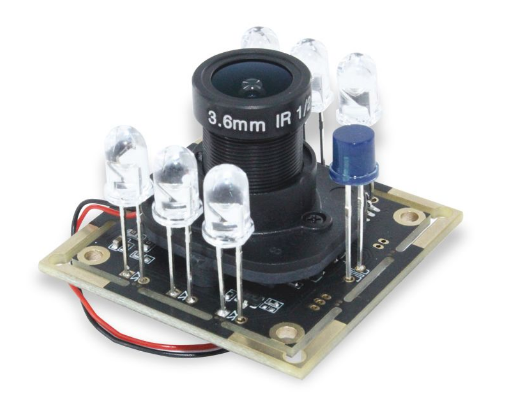Comparison of DSLR vs. Mirrorless Camera Modules
In this comprehensive and detailed article, we present a thorough comparison of DSLR (Digital Single-Lens Reflex) and Mirrorless Camera Modules. As experts in the field of photography and technology, we aim to provide you with valuable insights to help you make an informed decision when choosing between these two popular camera systems.
The development of camera technology has ushered in a new era for both amateur and professional photographers, positioning DSLR and Mirrorless Camera Modules as leading choices in the photography landscape. These advanced devices have not only enhanced the way we capture moments but have also transformed artistic expression. Here, we explore the primary distinctions and advantages of each camera type, equipping you with the knowledge to select the best option that aligns with your photography aspirations.
Understanding DSLR Cameras
What is a DSLR Camera?
A DSLR camera employs a mirror and pentaprism system to channel light from the lens to an optical viewfinder. The mirror reflects light, offering a visible scene through the viewfinder. Upon pressing the shutter button, the mirror shifts out of the way, allowing light to reach the camera’s sensor to capture the image.
Advantages of DSLR Cameras
1. Optical Viewfinder: DSLR cameras feature an optical viewfinder that delivers a clear and immediate view of the scene, facilitating accurate composition and framing.
2. Battery Life: Typically, DSLR cameras are equipped with larger batteries, which translates into extended power life, making them well-suited for prolonged shooting sessions.
3. Autofocus Performance: Traditionally, DSLRs provide faster and more dependable autofocus, particularly in low-light settings.
4. Wide Lens Selection: The DSLR ecosystem offers a vast selection of lenses, providing photographers remarkable creative freedom and adaptability for different shooting situations.
Understanding Mirrorless Camera Modules
What is a Mirrorless Camera?
In contrast, Mirrorless cameras do not have the mirror and pentaprism found in DSLRs. Instead, they utilize electronic viewfinders or depend entirely on the rear LCD screen for composition and framing purposes.
Advantages of Mirrorless Cameras
1. Compact and Lightweight: Generally, mirrorless cameras are more compact and lighter than DSLRs, making them an ideal option for travel and street photography.
2. Silent Shooting: With the absence of the mirror slap sound, mirrorless cameras offer silent shooting, providing a discrete way to capture candid moments without disturbing the subject.
3. Continuous Autofocus: Many mirrorless models come equipped with advanced autofocus systems designed for continuous tracking of moving subjects, which is particularly advantageous for sports and wildlife photography.
4. Electronic Viewfinder: A number of mirrorless cameras feature high-resolution electronic viewfinders that provide real-time previews of exposure settings and creative filters, enabling photographers to fine-tune their compositions.
Image Quality and Sensor Size
Both DSLR and Mirrorless Camera Modules are available with various sensor sizes that significantly impact image quality and performance.
DSLR Sensor Size
DSLRs utilize larger sensors, which range from full-frame to APS-C and Micro Four Thirds. Larger sensors often result in enhanced low-light performance, dynamic range, and overall image fidelity.
Mirrorless Sensor Size
Conversely, mirrorless cameras also provide a spectrum of sensor sizes like full-frame, APS-C, and Micro Four Thirds. Technological advancements have significantly enhanced the image quality of mirrorless sensors, narrowing the gap with DSLRs.
Autofocus System
DSLR Autofocus System
Classical DSLRs use phase-detection autofocus which relies on dedicated sensors inside the camera body. This focus system, refined over time, is highly efficient in tracking moving subjects.
Mirrorless Autofocus System
In contrast, mirrorless cameras utilize both contrast-detection and phase-detection autofocus systems, with many high-end models featuring on-sensor phase-detection for quick and accurate autofocus.
Video Capabilities
DSLR Video Capabilities
Historically, DSLRs faced limitations in video capabilities, often missing out on advanced features like 4K recording and higher frame rates. However, newer DSLR models have made substantial enhancements to their video functionalities.
Mirrorless Video Capabilities
Mirrorless systems are pioneers in video innovation, presenting robust 4K video recording and advanced video-themed features such as focus peaking and zebra patterns.
Lens Selection and Adaptability
DSLR Lens Selection
The considerable variety of lenses available for DSLRs is one of their main strengths. Photographers can choose from a wide array, including wide-angle, telephoto, prime, and zoom lenses, catering to various shooting styles.
Mirrorless Lens Selection
While the selection of lenses for mirrorless systems has grown significantly, it may still trail behind the extensive array of DSLR lenses. However, by utilizing lens adapters, photographers can access a broad range of DSLR lenses with their mirrorless cameras.
Conclusion
To conclude, both DSLR and Mirrorless Camera Modules offer their unique benefits and cater to diverse photography preferences. While DSLRs are favored for their optical viewfinders and extensive lens options, mirrorless cameras excel with their compact design, silent operation, and superior video functionalities.
Ultimately, choosing between a DSLR and a Mirrorless camera depends on your personal preferences, intended photography styles, and budget. As technology continues to evolve, both types of systems will likely advance further and redefine the boundaries of photography.
If you're interested in learning more about Camera Modules, please contact us. We are here to provide expert assistance.


